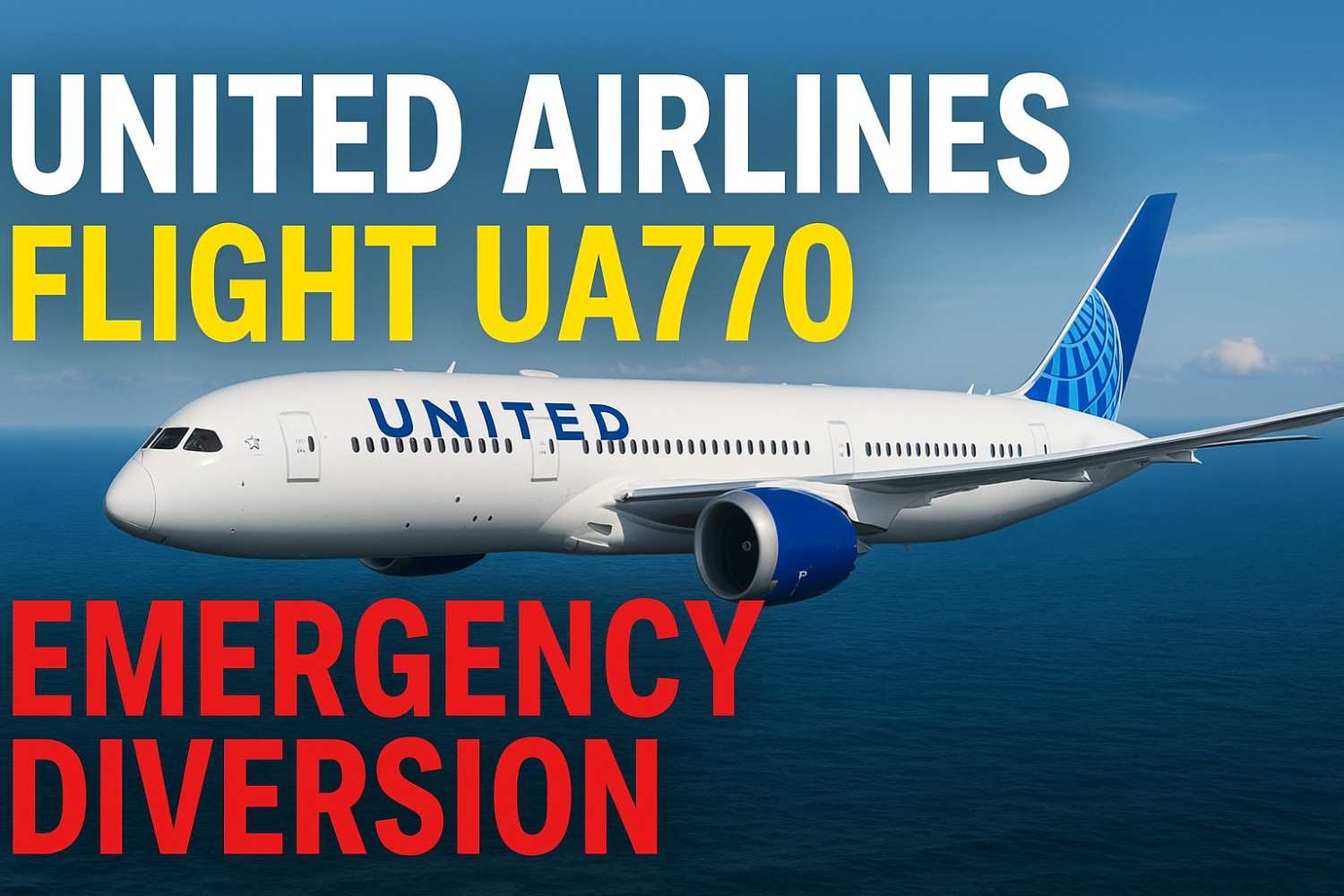On May 27, 2025, what was scheduled to be a routine transatlantic flight turned into an urgent safety manoeuvre. The flight in question—United Airlines Flight UA770—departed from Barcelona–El Prat Airport (BCN), Spain, bound for Chicago O’Hare International Airport (ORD), USA. During the cruise phase over Europe / the Atlantic, the crew detected an anomaly and elected to execute an emergency diversion.
Reports indicate that the Boeing 787-9 Dreamliner operating Flight UA770 experienced a possible cabin pressurization system alert. In response, the flight crew declared the transponder code “Squawk 7700” (the universal code for a general emergency) and requested a reroute to the nearest suitable major airport — which turned out to be London Heathrow Airport (LHR).
Thus the event is correctly described as the United Airlines Flight UA770 emergency diversion.
What Happened & Why
The sequence of events for the United Airlines Flight UA770 emergency diversion appears to be as follows:
- The aircraft departed Barcelona on schedule, bound for Chicago.
- After reaching cruising altitude, the flight crew’s monitoring systems flagged a potential pressurization anomaly.
- Recognizing the risk associated with cabin pressure issues (such as hypoxia, discomfort, or structural concerns), the crew took the precaution of declaring an emergency and diverting.
- The aircraft was rerouted to London Heathrow, landed safely on runway 27R (per some reports), and the emergency services on the ground were prepared.
- No injuries were reported to passengers or crew aboard United Airlines Flight UA770 during the diversion and landing.
The decision to divert instead of continuing to the original destination underscores the airline’s priority on safety over schedule.
Why the Diversion Was the Right Decision
In aviation, cabin pressurization is critical when flying at high altitudes. A fault that could lead to unsafe cabin conditions must be treated with urgency. The United Airlines Flight UA770 emergency diversion demonstrates how the redundancy of modern aircraft systems and the professional training of crew combine to ensure safety.
Selecting Heathrow made operational sense: as a major international hub with strong emergency infrastructure, it provided a capable diversion site for a large wide-body aircraft like the Boeing 787-9. In short, the United Airlines Flight UA770 emergency diversion was executed under the best possible option available in the circumstances.
Passenger Experience & Aftermath
For the passengers on United Airlines Flight UA770, the diversion would have introduced unexpected disruption: re-routing, possible delay in arrival, re-accommodation, etc. That said, reports suggest the cabin crew handled the situation with calm professionalism, maintaining communication with passengers and managing the situation as per standard emergency procedures.
After landing, the aircraft was taken out of regular service for inspection and maintenance teams undertook a detailed check of the pressurisation system, air-data sensors, and other relevant systems. The airline arranged for passengers to continue their journeys, providing alternative flights and support where needed.
Implications for Airline Safety
The United Airlines Flight UA770 emergency diversion offers several takeaways:
- Even in modern aviation, technical alerts (e.g., pressurization system warnings) may require immediate action. The cost of complacency would be too high.
- Crew training is crucial: rapid recognition, correct decision-making, communication with ATC (air traffic control), and management of the cabin environment all combine to a successful outcome.
- The airline’s safety culture and adherence to protocol ensure that a diversion is not a sign of failure but of preparedness. In this case, the United Airlines Flight UA770 emergency diversion reaffirmed that position.
- For travellers, this event is a reminder that diversions—while inconvenient—are a built-in part of aviation risk-mitigation, intended to bring everyone down safely rather than press on to a destination under non-ideal conditions.
Conclusion
The incident of United Airlines Flight UA770 emergency diversion is a textbook example of safety systems working as intended. What began as a routine Barcelona-to-Chicago flight became a priority safety operation when a cabin pressurization alert triggered the decision to divert to London Heathrow. Thanks to the professionalism of the crew, the readiness of the airline and ground infrastructure, and the inherent safety-design of the aircraft, all passengers and crew landed safely and without injury.
While no one boards a flight expecting an emergency diversion, the story of United Airlines Flight UA770 shows how, when such a scenario arises, the mechanisms are in place to manage it effectively. In the end, the priority remains simple: bringing people home safely.



